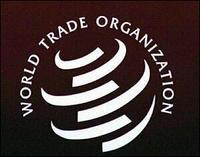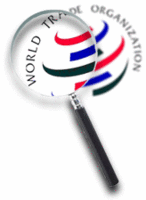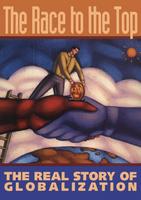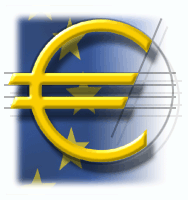

!!!On Holidays!!!
The Blog would be up and running again by the 1st January 2006.
The Blog would be up and running again by the 1st January 2006.
Monthly Updated

 Robert Hunter-Wade writes in the Financial Times:
Robert Hunter-Wade writes in the Financial Times: Governments that listen to the private sector are more likely to design credible and workable reforms, while entrepreneurs who understand what their government is trying to achieve with a program of reforms are more likely to accept and support them.
Governments that listen to the private sector are more likely to design credible and workable reforms, while entrepreneurs who understand what their government is trying to achieve with a program of reforms are more likely to accept and support them. Formerly Chief Economist at the Bank, the Nobel Laureate wrote a short piece on intellectual property in the Daily Times of Pakistan:
Formerly Chief Economist at the Bank, the Nobel Laureate wrote a short piece on intellectual property in the Daily Times of Pakistan: A firm's performance can be evaluated using financial ratios. Referencing these ratios to those of other firms allows a comparison to be made. The following is a listing of some useful ratios.
A firm's performance can be evaluated using financial ratios. Referencing these ratios to those of other firms allows a comparison to be made. The following is a listing of some useful ratios. The current issue of Foreign Affairs has an excellent article debunking the idea that America's antidumping policies are good for America. The essay, Antidumping: The Third Rail of Trade Policy, is written by N. Gregory Mankiw and Phillip L. Swagel. They say that antidumping law has become just a way for vested interests to protect themselves at the expense of American consumers (especially harming the poorest Americans) and at the expensive of companies that benefit from cheap inputs.
The current issue of Foreign Affairs has an excellent article debunking the idea that America's antidumping policies are good for America. The essay, Antidumping: The Third Rail of Trade Policy, is written by N. Gregory Mankiw and Phillip L. Swagel. They say that antidumping law has become just a way for vested interests to protect themselves at the expense of American consumers (especially harming the poorest Americans) and at the expensive of companies that benefit from cheap inputs. "ECONOMISTS argue for free trade. They have two centuries of theory and experience to back them up. And they have recent empirical studies of how the liberalization of trade has increased productivity in less-developed countries like Chile and India. Lowering trade barriers, they maintain, not only cuts costs for consumers but aids economic growth and makes the general public better off."
"ECONOMISTS argue for free trade. They have two centuries of theory and experience to back them up. And they have recent empirical studies of how the liberalization of trade has increased productivity in less-developed countries like Chile and India. Lowering trade barriers, they maintain, not only cuts costs for consumers but aids economic growth and makes the general public better off." The concept of entrepreneurship has a wide range of meanings. On the one extreme an entrepreneur is a person of very high aptitude who pioneers change, possessing characteristics found in only a very small fraction of the population. On the other extreme of definitions, anyone who wants to work for himself or herself is considered to be an entrepreneur.
The concept of entrepreneurship has a wide range of meanings. On the one extreme an entrepreneur is a person of very high aptitude who pioneers change, possessing characteristics found in only a very small fraction of the population. On the other extreme of definitions, anyone who wants to work for himself or herself is considered to be an entrepreneur. "It was extremely revealing traveling from Europe to India as French voters (and now Dutch ones) were rejecting the E.U. constitution - in one giant snub to President Jacques Chirac, European integration, immigration, Turkish membership in the E.U. and all the forces of globalization eating away at Europe's welfare states. It is interesting because French voters are trying to preserve a 35-hour work week in a world where Indian engineers are ready to work a 35-hour day. Good luck."
"It was extremely revealing traveling from Europe to India as French voters (and now Dutch ones) were rejecting the E.U. constitution - in one giant snub to President Jacques Chirac, European integration, immigration, Turkish membership in the E.U. and all the forces of globalization eating away at Europe's welfare states. It is interesting because French voters are trying to preserve a 35-hour work week in a world where Indian engineers are ready to work a 35-hour day. Good luck." Earlier this week John Yunker spotted a job advert. This job advert gave him an excuse to link back to a piece he did last December in which he said that 2005 would be the year when Web Globalization Goes Mainstream. Web designers are now being asked if they are also "web globalizers". Can they, that is to say, design websites that reach out successfully beyond their linguistic base, with well placed "change the language" buttons, which route viewers to their local supplier of the global goods or services in question?
Earlier this week John Yunker spotted a job advert. This job advert gave him an excuse to link back to a piece he did last December in which he said that 2005 would be the year when Web Globalization Goes Mainstream. Web designers are now being asked if they are also "web globalizers". Can they, that is to say, design websites that reach out successfully beyond their linguistic base, with well placed "change the language" buttons, which route viewers to their local supplier of the global goods or services in question? Britain's tabloid Sun newspaper had an superb article on Friday on the effect of globalization on China. Oliver Harvey, writing from Shenzhen in China, pointed out that only 25 years ago Shenzhen was a...
Britain's tabloid Sun newspaper had an superb article on Friday on the effect of globalization on China. Oliver Harvey, writing from Shenzhen in China, pointed out that only 25 years ago Shenzhen was a... Some people still don't quite seem to get this free trade idea. I refer, of course, to Peter Mandelson's minions in Brussels who have once again been found to be in the wrong by the World Trade Organization.
Some people still don't quite seem to get this free trade idea. I refer, of course, to Peter Mandelson's minions in Brussels who have once again been found to be in the wrong by the World Trade Organization.


